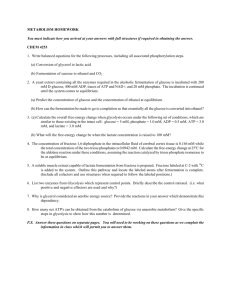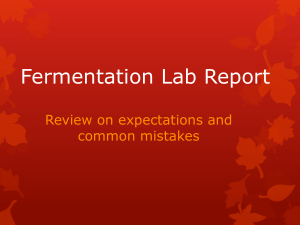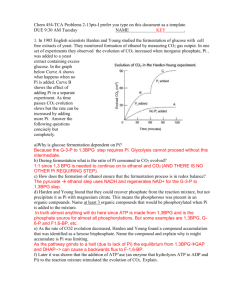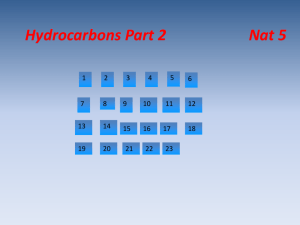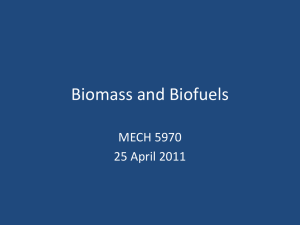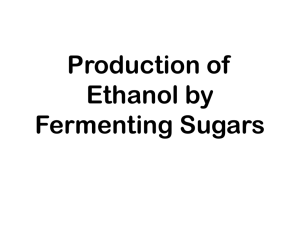revision questions
advertisement
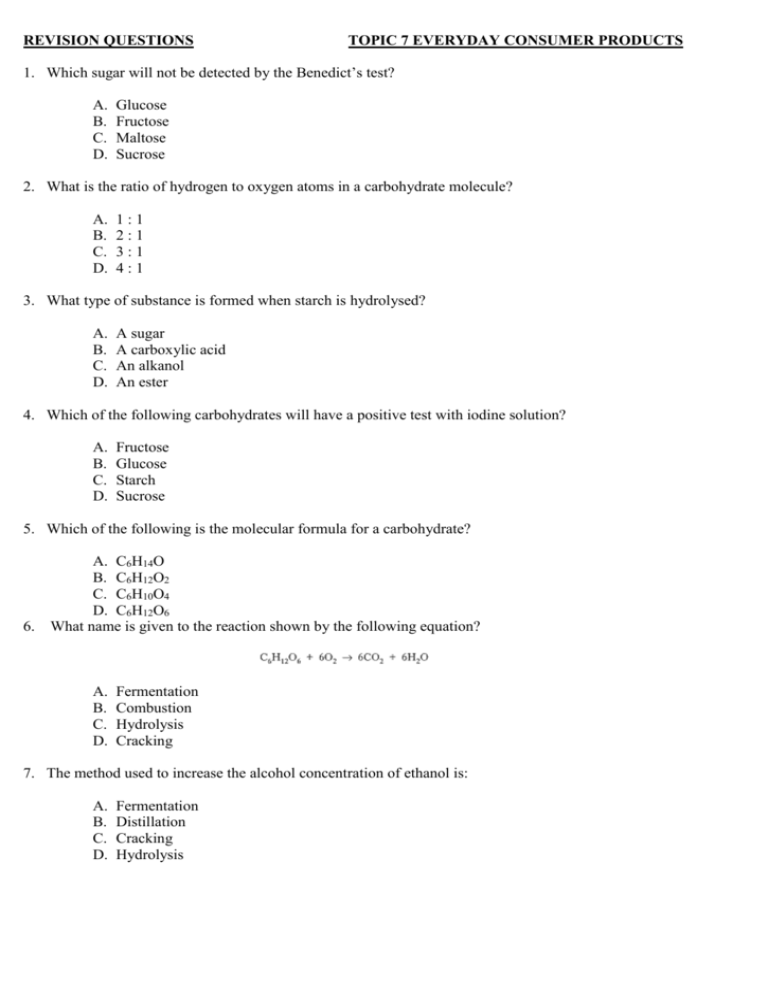
REVISION QUESTIONS TOPIC 7 EVERYDAY CONSUMER PRODUCTS 1. Which sugar will not be detected by the Benedict’s test? A. B. C. D. Glucose Fructose Maltose Sucrose 2. What is the ratio of hydrogen to oxygen atoms in a carbohydrate molecule? A. B. C. D. 1:1 2:1 3:1 4:1 3. What type of substance is formed when starch is hydrolysed? A. B. C. D. A sugar A carboxylic acid An alkanol An ester 4. Which of the following carbohydrates will have a positive test with iodine solution? A. B. C. D. Fructose Glucose Starch Sucrose 5. Which of the following is the molecular formula for a carbohydrate? 6. A. C6H14O B. C6H12O2 C. C6H10O4 D. C6H12O6 What name is given to the reaction shown by the following equation? A. B. C. D. Fermentation Combustion Hydrolysis Cracking 7. The method used to increase the alcohol concentration of ethanol is: A. B. C. D. Fermentation Distillation Cracking Hydrolysis 8. Fermentation of glucose to ethanol and carbon dioxide stops when the ethanol concentration reaches 13%. This is because: A. B. C. D. The ethanol has destroyed the yeast All the glucose has been used up Carbon dioxide is harmful to yeast The mixture is now saturated with ethanol 9. Which of the following alcohols is likely to have been made by distillation? A. B. C. D. Wine (alcohol concentration of 12%) Vodka (alcohol concentration of 40%) Beer (alcohol concentration of 4%) Cider (alcohol concentration of 5%) 10. Which of the following gases is also produced during fermentation? A. B. C. D. Oxygen Nitrogen Carbon dioxide Hydrogen
